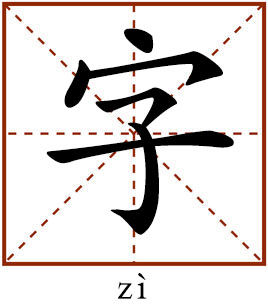Character

Generally, this means a Chinese character. It also refers to a type of courtesy or stylized name traditionally given to males in ancient China.
一字之师
yī zì zhī shī
Yi zi means a single Chinese character and zhi means “of.” Shi refers to a teacher. This idiom literally refers to a teacher of a single character. It is often used to describe someone who dramatically improves a poem by changing a single character in the poem.
There are several stories about this idiom. The most famous one explores a poem titled “Zao Mei” (“Early Plum Blooms”). In the story set in the Tang Dynasty, there is a Buddhist monk named Qi Ji, who loves poetry and often writes good poems. One day, he composes two lines of “Zao Mei,” in which he depicts several twigs of a plum tree blooming deep in the snow the night before. Qi shows these lines to one of his friends, Zheng Gu, a poet of the time. Zheng suggests that the character “shu” (several) should be changed into “yi” (one) to highlight the sense and feeling of early springtime. Amazed by Zheng’s talent, Qi falls prostrate in worship. After then, Zheng was praised as the “teacher of a single character.”
字如其人
zì rú qí rén
Zi means handwriting and ru means “like.” Ren refers to a person. This is a well-known Chinese proverb similar to one in the West—“Style is the man himself.”
There are several explanations for this proverb. The first explanation is that it compares a person’s handwriting to their appearance. It is said that a good-looking or well-dressed person might tend to write beautifully. However, this argument is often untenable. The common interpretation of this proverb is that a man’s being can be deduced from his form of writing. This interpretation is based on the Chinese belief that perfect calligraphy is a mirror of the calligrapher’s inner world. For instance, big, outgoing personalities tend to write in large, bold strokes, and shy, introverted personalities prefer to write in a small and slender manner. In other words, a writer’s character is his style.
edited by REN GUANHONG
